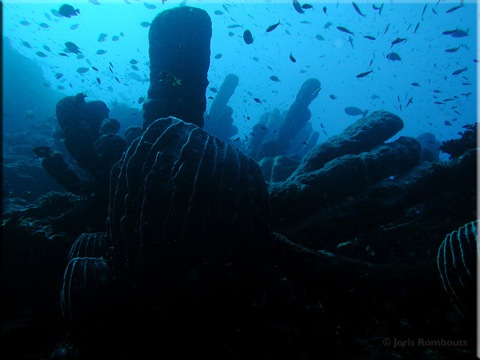
- Check the sub-map for the specimen information files -
SPONGES
Sponges are one of the oldest living organisms in the sea, and are found in both the shallows and in deep water. In fact, it has been proven from fossils that sponges existed over six hundred million years ago. Sponges have no true tissues or organs – each sponge consists of three types of cells. There is an outer layer of covering cells, an inner mass with cells which pull water through the sponge and capture food, and there the amoeba-like cells which move food particles. Sponges are nature's ultimate water filter, with an average-sized sponge filtering a few hundred liters of water a day. Although most are flexible, they are still vulnerable. Their biggest threats are pollution, clumsy snorkelers and divers, anchors and silt. Sponges take in water via small pores. When these become blocked – with silt or sand – they are unable to filter water and will die from starvation. Some sponges produce a slime to get rid of sediment. After a storm or where divers have stirred up sand or sediment, it is helpful to brush this away from the sponge’s outer layer. Sponges can reproduce sexually or asexually. In sexual reproduction, the male sponge releases large numbers of sperm into the water so the females can fertilize their eggs. Some sponges produce both sperm and eggs, which enables them to fertilize themselves. After a period of time, the sponge larvae are released into the water and those that land on a hospital spot will develop into a sponge. The rest will die. Except for the threats already mentioned, sponges do not have real enemies. However some file- or angelfish are known to nibble "damaged" sponges. If a piece of sponge breaks off and lands in an area of little current, it will attach itself to the bottom and begin a new formation.
Many thanks to dr. Rob W.M. van Soest for information.
- Check the sub-map for the specimen information files -

